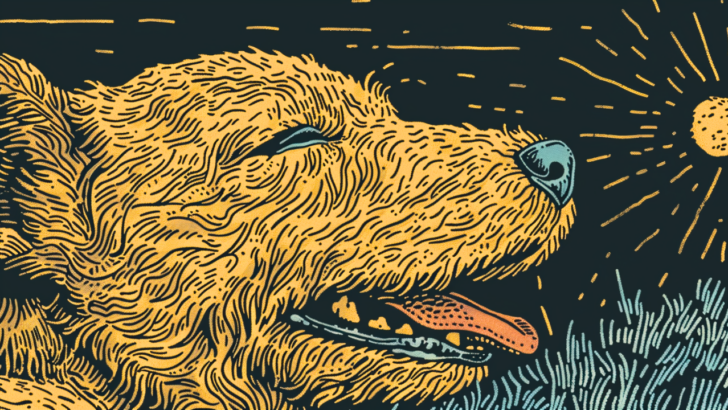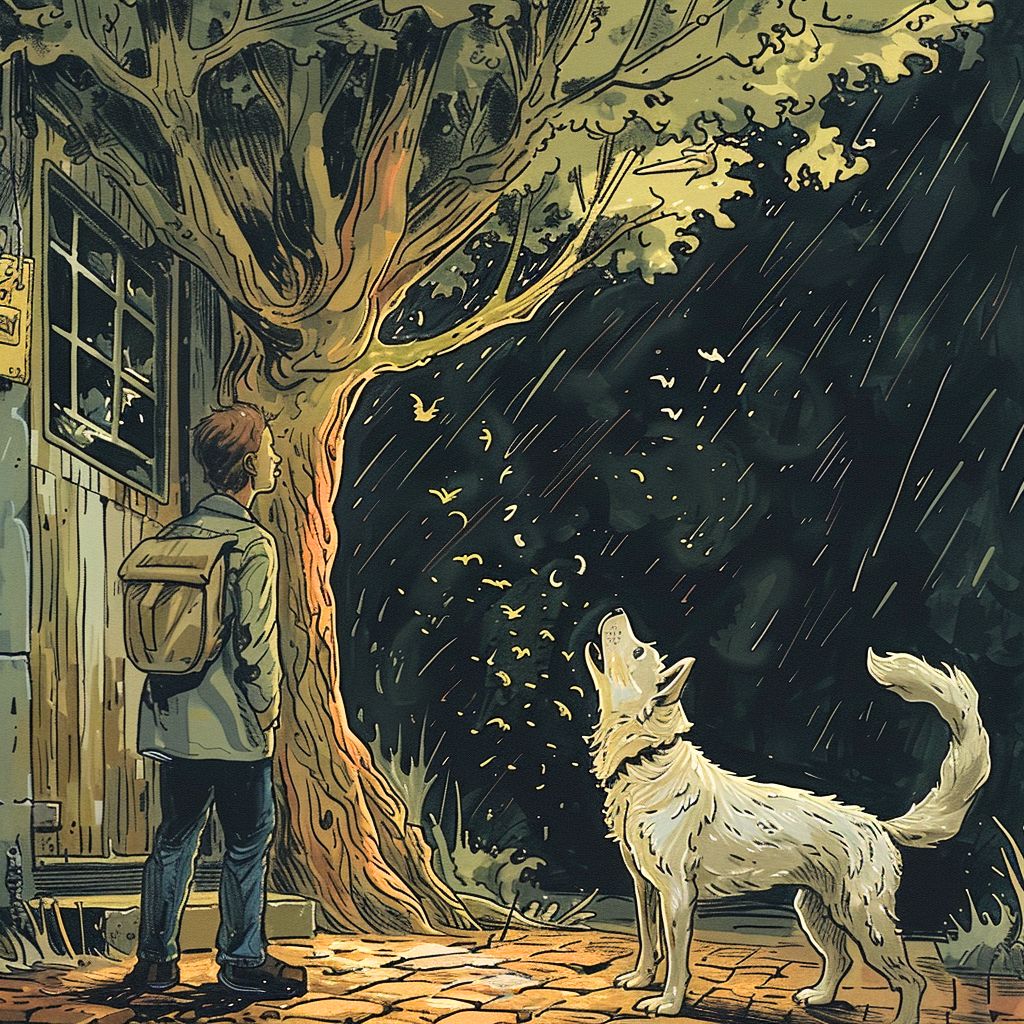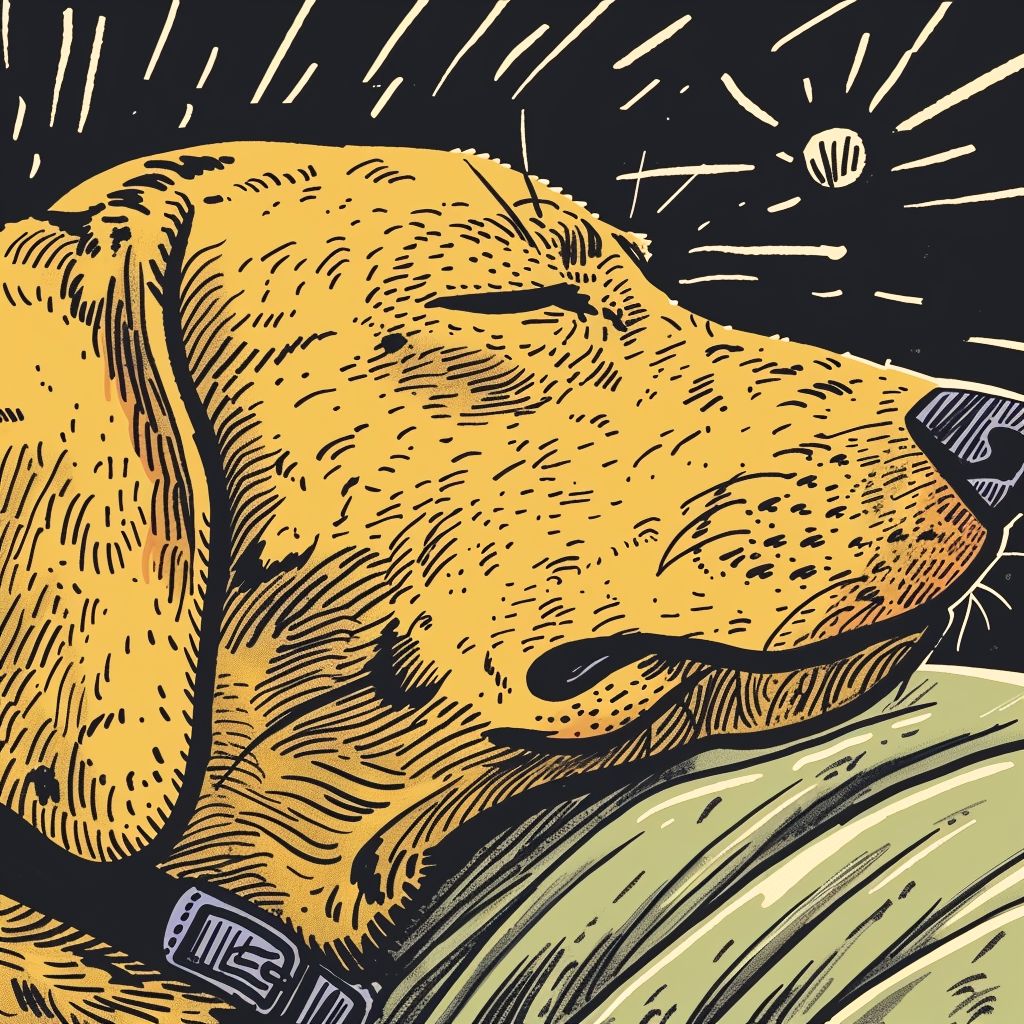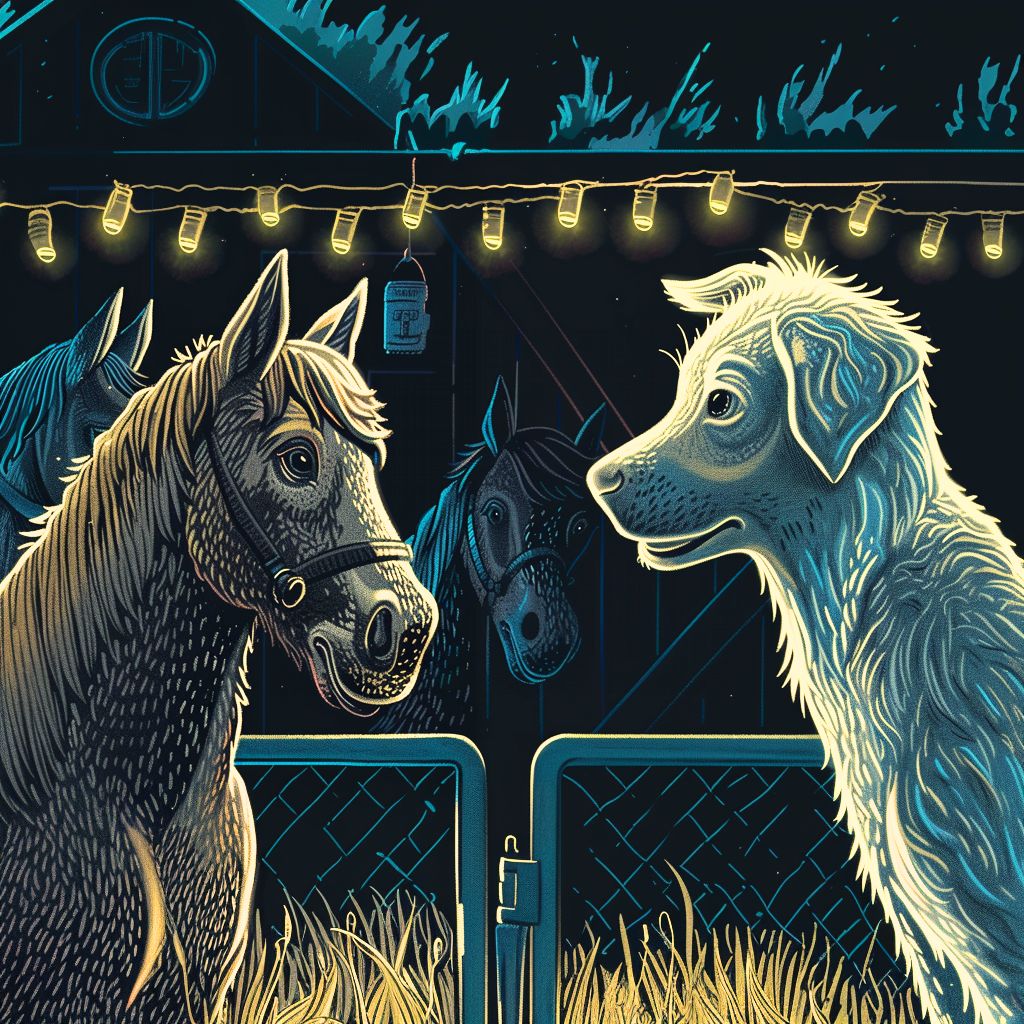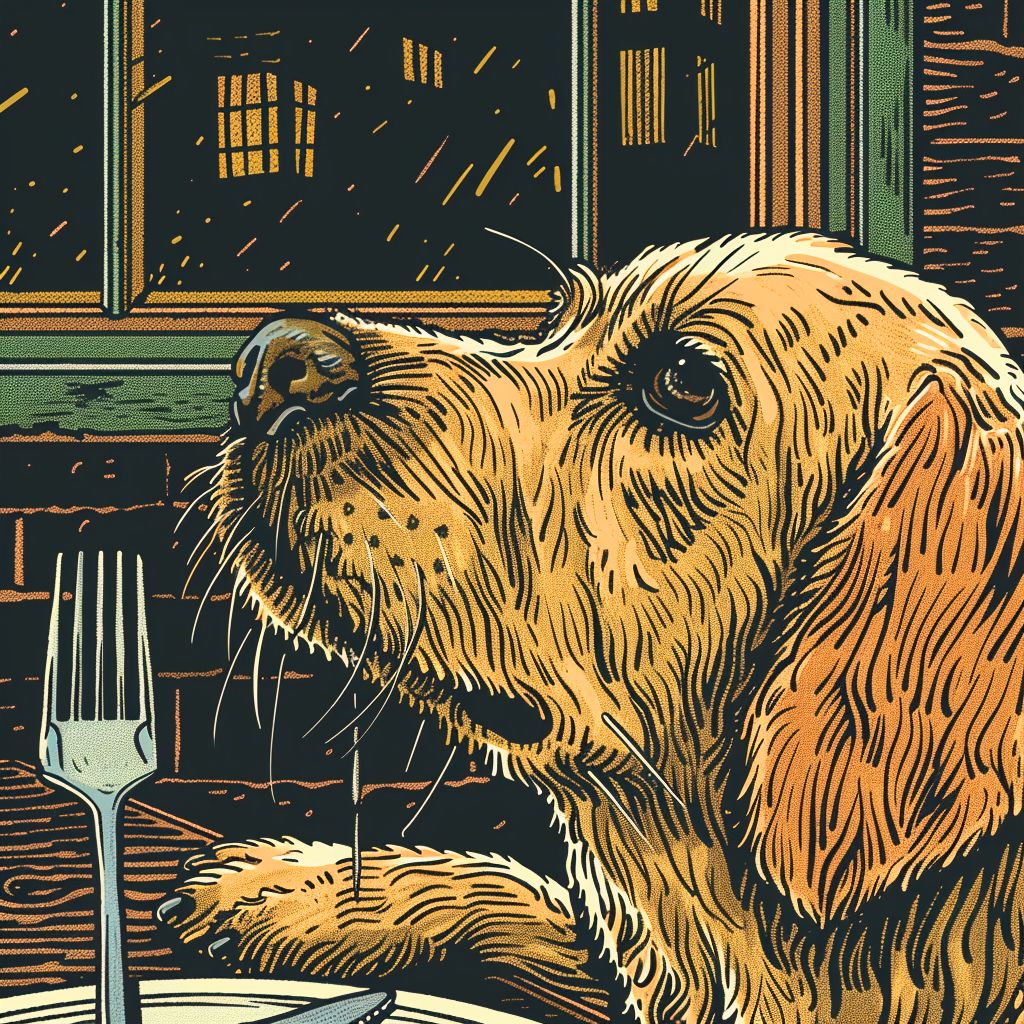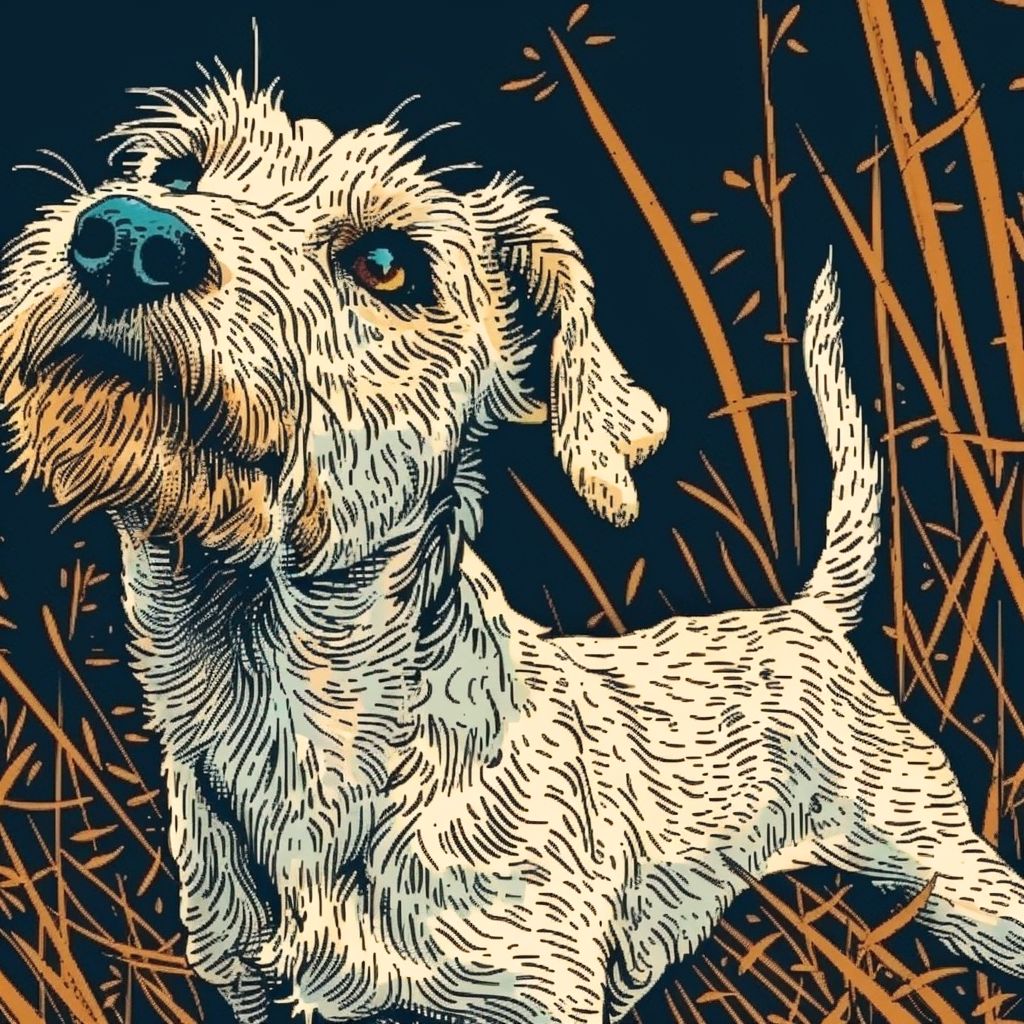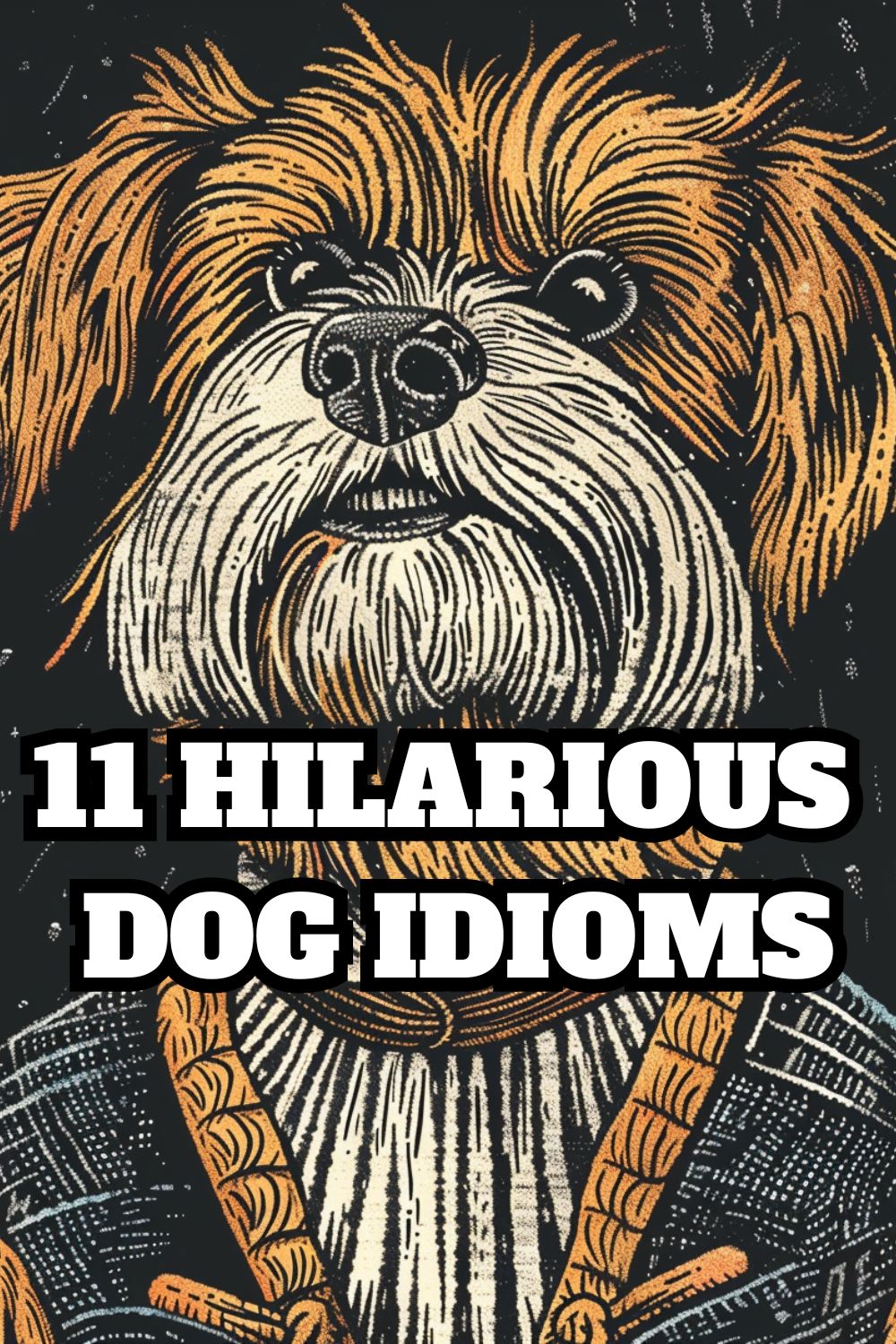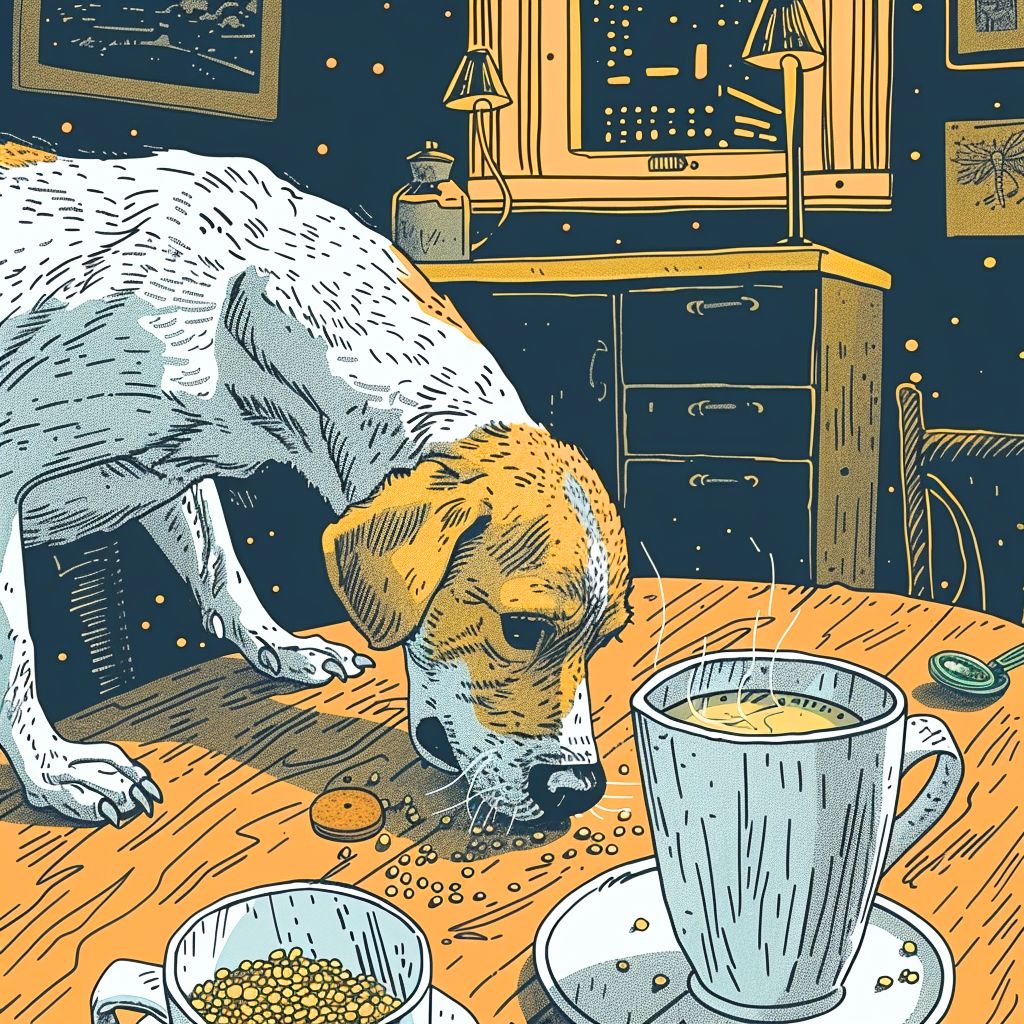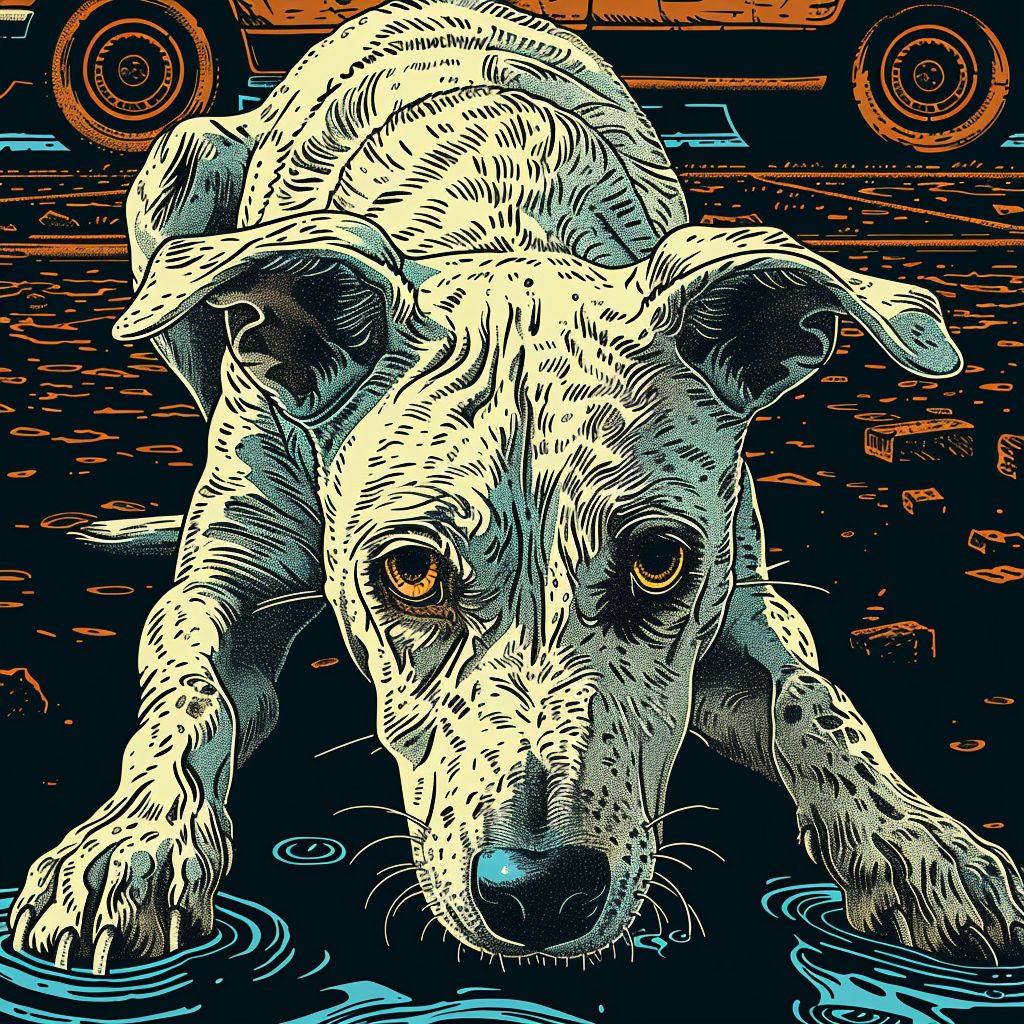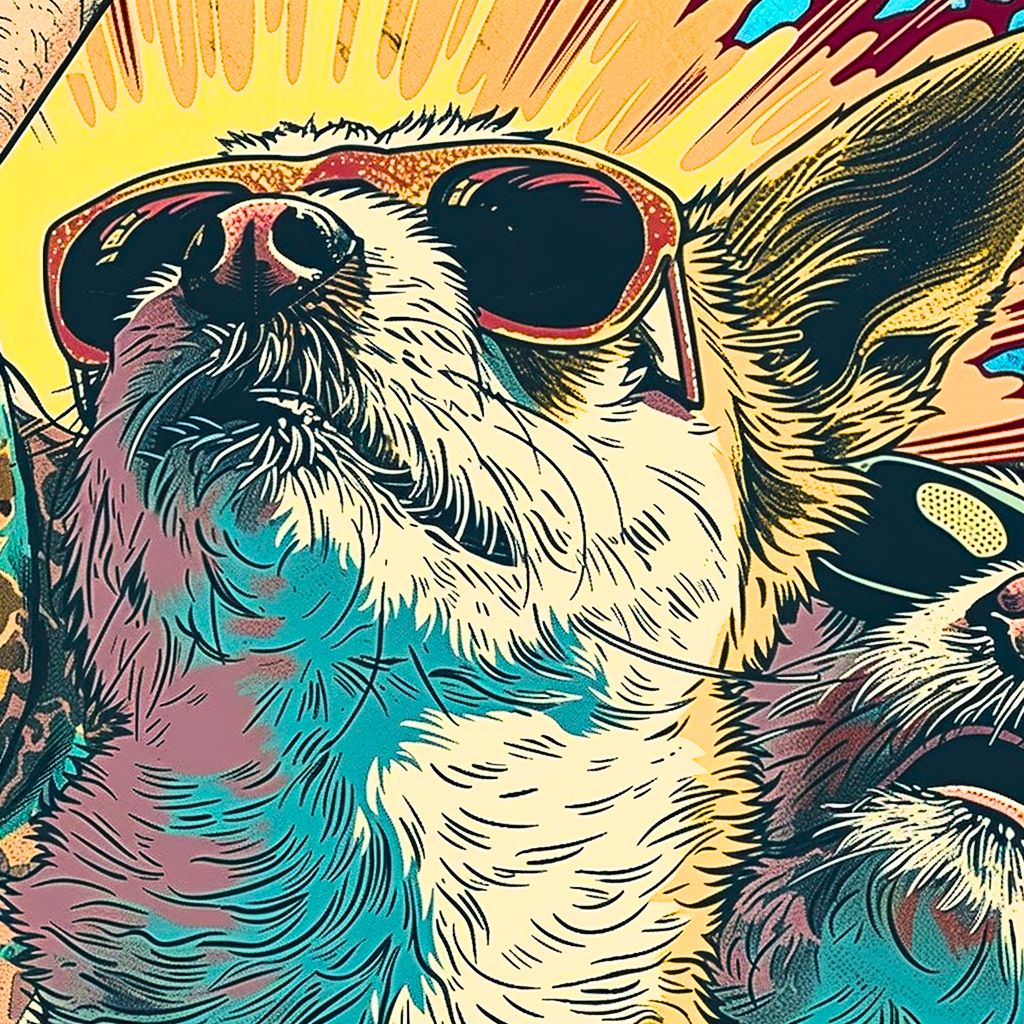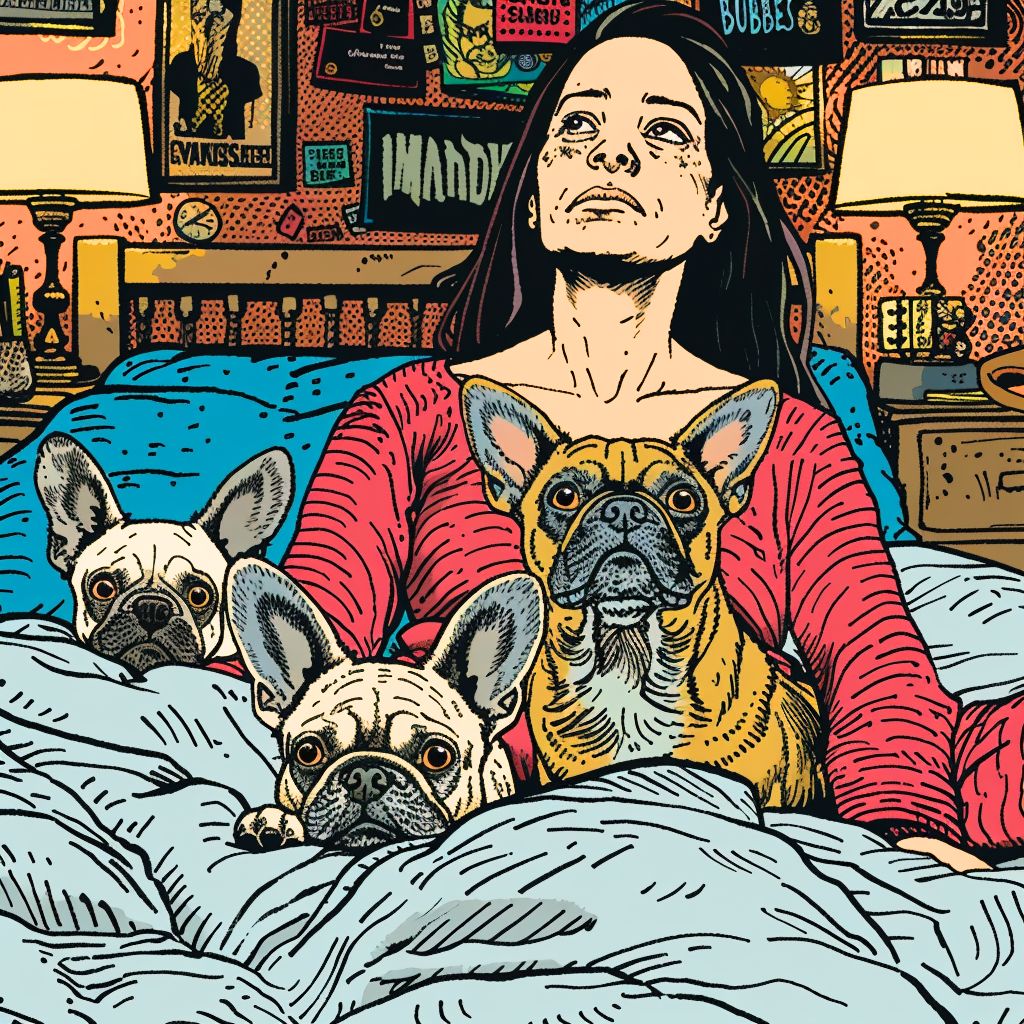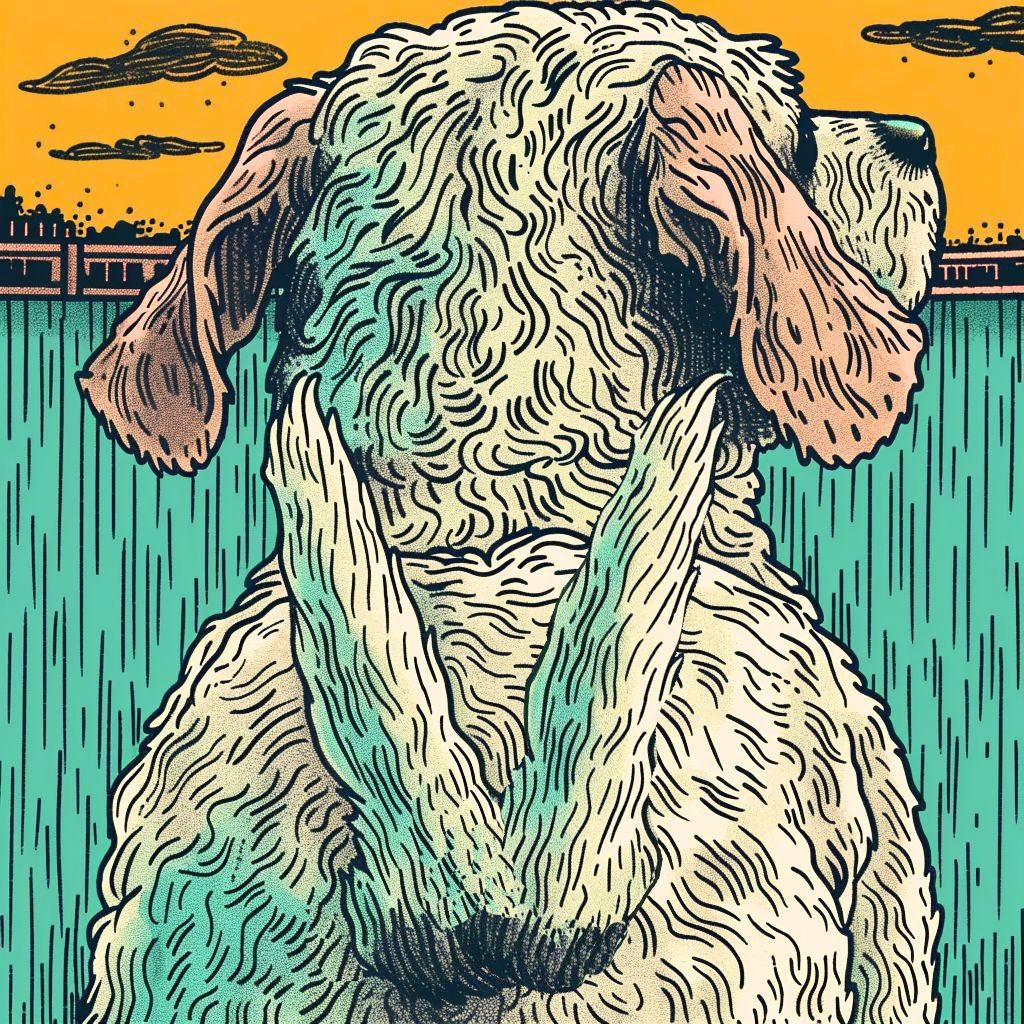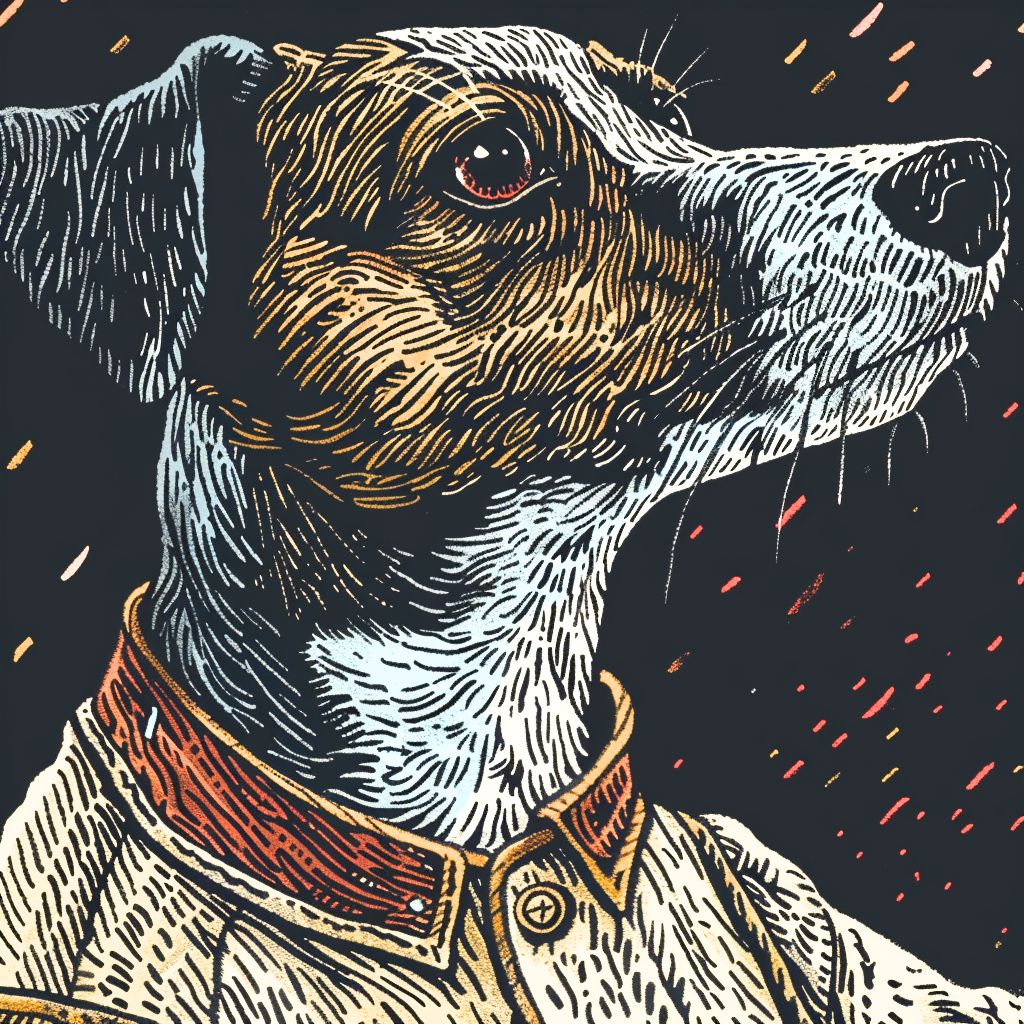Welcome to the playful parade of dog idioms, where every phrase is a tail-wagging treat, and the language is as lively as a game of fetch in the park!
Ever wonder why someone is “barking up the wrong tree” or recommends ” letting sleeping dogs lie”? Buckle up because you’re in for a delightful romp!
In this spirited jaunt through the kennel of the English language, we’ll dig up 11 hilarious dog idioms that bring a dose of canine charm to our daily dialogues.
From the dramatic antics of a “dog and pony show” to the rough-and-tumble world of “dog-eat-dog,” each idiom captures the essence of our four-legged friends in vibrant, visual expressions.
So, leash up your sense of humor, sniff out your curiosity, and embark on a journey through the whimsical world of words inspired by man’s best friend. Prepare to howl with laughter and maybe even learn a new trick or two about the phrases that help us paw our way through conversations. It’s time to unleash our language and play fetch with these fetching expressions!
1. Barking up the wrong tree
Ever found yourself energetically arguing in a meeting, only to realize your point is completely irrelevant to the topic at hand? That’s a classic case of “Barking up the wrong tree.” Picture this: a dog zealously barking at a tree, sure that he’s cornered something fantastic—only to discover it’s just the wind rustling the leaves. Talk about a misadventure!
This phrase takes us back to the days of hunting when dogs used their keen noses to track prey. Unfortunately, those noses weren’t foolproof, leading to comical mix-ups with the wrong trees.
Today, we use this idiom as a playful reminder not to waste our efforts on unfruitful endeavors. It’s about misjudging the situation, like mistaking a cat’s shadow for the cat itself.
Who hasn’t misplaced their energies at least once? Whether it’s pursuing a project doomed from the start or harping on a point that turns out to be moot, we’ve all been that dog at some point.
Example 1: Chasing after that unreliable supplier is like barking up the wrong tree; it’s time to find a new one.
Example 2: He thought I was the one who broke the vase, but he was barking up the wrong tree.
2. Let sleeping dogs lie
Have you ever been tempted to stir up an old argument that had finally calmed down? Or perhaps, revisit a topic that everyone else had happily forgotten? That’s exactly when “Let sleeping dogs lie” comes into play. It’s like seeing a dog snoozing peacefully in the sunshine and deciding it’s a good idea to give it a little poke—probably not the best move, right?
This sage advice originated when waking a sleeping dog was as much about avoiding a bite as it was about letting well enough alone. It’s a call for prudence, urging us to avoid rekindling old disputes or resurrecting issues that might only reignite tension. Think about it: sometimes, the peace of not stirring trouble is far sweeter than the thrill of a debate.
It’s a reminder that not every silence needs to be filled, nor every past discrepancy revisited. This idiom is a handy tip for navigating social interactions smoothly in both personal and professional settings. Why dig up old bones when you can enjoy the peace?
Whether it’s a family dinner that could do without a heated debate over a past mishap or a team meeting where rehashing settled decisions could derail progress, sometimes the best action is inaction.
So, when is it wise to let sleeping dogs lie? Perhaps when bringing up past grievances could harm a reconciled relationship, or when office peace depends on not revisiting who forgot to refill the coffee maker last week. It’s about choosing your battles wisely and recognizing that the past can—and should—stay just where it is: behind us.”
Example 1: She considered asking about the previous manager’s departure but then decided to let sleeping dogs lie.
Example 2: Though I wondered why he looked upset, I thought it best to let sleeping dogs lie and not ask.
3. Dog and Pony Show
Let’s pull back the curtain on the idiom “Dog and Pony Show.”
Imagine sitting through a presentation that promises groundbreaking ideas but only delivers superficial flair. It’s as if you’ve been invited to a grand spectacle, only to find it’s just a couple of tricks repeated in a loop. This is the essence of a “Dog and Pony Show.” This idiom draws from the days of small traveling circuses, where dogs and ponies, rather than lions and elephants, were the main attractions. These shows were about charming and beguiling the audience with simple acts dressed to seem grand.
Originating in the early 20th century in the United States, the term was initially a nod to these humble entertainments that traveled from town to town. Today, it captures any effort to impress with pomp and splendor that masks the mundane reality beneath. In the corporate world, this might look like an elaborate presentation that dazzles but delivers little substance, or in politics, a campaign that’s heavy on rhetoric and light on actionable policy.
This idiom is a cautionary tale against being swayed by appearances and reminds us to look beyond the surface. It’s a useful metaphor for skepticism, urging us to question whether there is genuine value behind the spectacle or if it’s merely a distraction engineered to impress.
In a world where everyone tries to “sell” something, whether it’s a product, a plan, or a policy, it’s wise to remember that not all that glitters is gold. Looking for the substance behind the sparkle is more crucial than ever.
Example 1: The annual sales conference felt like a dog and pony show, with flashy presentations that offered little in the way of practical solutions.
Example 2: They thought they could win us over with a dog and pony show, but we’re interested in results, not theatrics.
4. Dog-eat-dog
Let’s tackle the gritty idiom “dog-eat-dog,” which evokes a world where only the toughest survive.
This phrase conjures images of a ruthless battleground where individuals claw their way to the top, sparing no expense of their peers. The idea stems from the grim spectacle of dogs, pushed to extremes, turning on each other over a morsel of food. It perfectly encapsulates competition’s fierce, sometimes merciless nature in certain environments.
First noted in the mid-16th century, “dog-eat-dog” vividly describes scenarios ranging from corporate office politics to the high stakes of entrepreneurial ventures. It warns of a world where compassion takes a backseat to survival and success, often used to highlight the brutal realities of industries known for their cutthroat nature.
It serves as a critical lens through which to view our surroundings, reminding us to remain vigilant and prepared in highly competitive settings. Recognizing the intensity of such environments can spur us to adopt strategies that balance ambition with ethical considerations—because even in the toughest arenas, the way we compete matters.
Example 1: In the world of startups, it’s a dog-eat-dog situation; you must constantly be on your toes.
Example 2: He thrived in the dog-eat-dog atmosphere of Wall Street, where every success counts.
5. The tail wagging the dog
Next up is the idiom “The tail wagging the dog,” a fascinating expression that flips the natural order of things on its head.
This phrase paints a comical picture: imagine a dog being led around by its tail instead of the tail simply following the dog’s movements. It’s used to describe situations where a small or seemingly insignificant part of something controls the whole, which is contrary to what one would expect.
This topsy-turvy scenario is perfect for highlighting cases of misplaced priorities or disproportionate influence.
Historically, the idiom’s roots aren’t crystal clear, but it vividly captures the absurdity of a minor detail driving the larger operation. It’s particularly popular in political or corporate contexts, where it can critique the undue power of a minor faction or a side issue that somehow comes to dominate the main agenda.
In discussions about strategic decisions, whether in boardrooms or government, “The tail wagging the dog” can serve as a cautionary tale. It encourages a closer examination of whether the driving forces behind decisions are the most appropriate or if they are merely peripheral issues taking center stage.
Example 1: The interns decided on the meeting agenda, so it’s clear that the tail is wagging the dog at our office.
Example 2: When minor features start dictating product development, it’s like the tail wagging the dog.
6. A dog’s breakfast
Let’s examine the idiom “a dog’s breakfast,” which is far less appetizing than it sounds but just as messy.
This colorful expression describes something utterly disorganized or poorly put together—reminiscent of an actual dog’s breakfast, which might look like a haphazard jumble of kibble and scraps. It’s not just a small mess; it’s a complete shambles, something thrown together without care or coherence.
The origins of this idiom aren’t precisely pinned down, but its vivid imagery conveys chaos and disorder with a touch of humor. It’s a handy phrase for critiquing anything from a disastrous home renovation project to a business plan that seems to have been assembled without a blueprint.
Whether you’re looking at a cluttered desk or a botched presentation, calling it “a dog’s breakfast” implies that it might be time to go back to the drawing board. It’s a light-hearted way to acknowledge that things aren’t quite as they should be and perhaps a nudge to tidy up the mess.
Example 1: The report was a dog’s breakfast; pages were out of order, and the data was incomplete.
Example 2: He tried to fix the plumbing himself, but it was a dog’s breakfast and needed a professional touch.
7. Leading a dog’s life
The phrase “Leading a dog’s life” conjures up an image of a life filled with toil and difficulty, reminiscent of how dogs were once commonly treated—more as beasts of burden than cherished pets. This idiom reflects on the tough, often thankless conditions someone might be enduring, similar to the harsh lives dogs once endured.
Historically, many dogs faced a life of hard labor, whether pulling sleds in freezing conditions or guarding property without proper shelter. Today, using this expression highlights human situations that are comparably dire and demanding. It’s a poignant metaphor for describing someone caught in a grueling routine, facing daily challenges with little respite.
It’s particularly resonant in contexts where people feel overworked and underappreciated, much like the old notion of a dog’s thankless existence. Whether it’s working multiple jobs to make ends meet or dealing with unrelenting stress, this idiom serves as a sympathetic nod to tough human experiences. It evokes empathy and reminds us of the resilience required to endure such circumstances.
“Leading a dog’s life” can also extend beyond individual struggles to describe broader societal issues where certain groups or communities face ongoing adversity, often overlooked or normalized by others. In this way, the idiom not only highlights personal hardships but also calls attention to larger injustices that require acknowledgment and action.
Example 1: He’s been leading a dog’s life since he lost his job, struggling to make ends meet.
Example 2: Working two jobs and studying at night, she felt she was leading a dog’s life, with no time for relaxation or enjoyment.
8. The dog days of summer
This phrase actually has its roots in astronomy rather than canine behavior. It refers to the period typically from July to early September in the Northern Hemisphere, when the dog star, Sirius, rises and sets with the sun. In ancient times, it was believed that Sirius, the brightest star in the constellation Canis Major (Large Dog), added its heat to the sun’s, intensifying the summer’s warmth.
These days, we use “The dog days of summer” to denote the hottest, most uncomfortable part of the season. The heat can be oppressive, making the air feel heavy and still. It’s a time when the pace of life might slow down, as people and animals alike seek respite from the scorching sun.
Beyond just describing weather, this idiom evokes the lethargy and overwhelming languor often accompanying peak summer. It’s used in various contexts to capture the essence of stagnation or a period of inactivity, often with a hint of discomfort or irksomeness.
Example 1: With the temperature hitting record highs, we’re truly in the dog days of summer now.
Example 2: During the dog days of summer, the city empties as everyone heads to the coast for a cooler escape.
9. Three dog night
Now let’s delve into the chilly idiom “Three dog night,” which vividly describes just how cold a night can get.
This expression isn’t about a musical band but rather a survival tactic used by the indigenous people of Australia. On particularly freezing nights, the number of dogs one needed to stay warm while sleeping would indicate just how bitterly cold it was. A “three dog night” was so frigid that cuddling up with three dogs was necessary to prevent hypothermia.
Today, we use “Three dog night” to denote extremely cold conditions, literally or metaphorically. It’s a colorful way to emphasize the severity of the cold, capturing the essence of those nights when the frost seems to bite as fiercely as a pack of dogs.
This idiom is also a testament to the ingenious ways humans have adapted to their environments, using whatever resources available—even the body heat of dogs—to cope with the elements. It underscores a shared experience, as cold nights are a common challenge across many cultures and histories.
Example 1: Last winter was brutal, with several three dog nights that made us pile on every blanket we had.
Example 2: He joked that moving to the mountains would mean getting used to three dog nights, so they might need more dogs.
10. Like a dog with two tails
The idiom “Like a dog with two tails” captures a level of happiness that’s doubly delightful.
Imagine a dog so overjoyed that one tail just isn’t enough to express its excitement—this is the essence of someone who feels “like a dog with two tails.” It’s a vivid depiction of pure joy and exuberance, used to describe someone who is extremely happy or thrilled about their circumstances.
This charming expression paints a picture of unbridled happiness, suggesting that the person is wagging two tails because one simply cannot contain their glee.
This expression is perfect for those moments when mere words fail to describe the intensity of someone’s elation. Whether it’s receiving fantastic news, achieving a long-sought-after goal, or simply experiencing a perfect day, this idiom adds a playful and vivid layer to storytelling.
It brings to life the image of a person so filled with joy that they might as well be energetically wagging two tails, much like a dog that can’t control its happiness when its owner comes home.
It’s often employed in casual conversation to convey not just the presence of happiness, but its abundance. It evokes a mental image that is universally understandable and inherently endearing, reflecting the uncontrollable joy that comes with truly great news or events.
In this way, the idiom encourages us to celebrate the peaks of joy in life with a heart as light and merry as a dog with an extra tail to wag.
Example 1: When she found out she had won the scholarship, she was like a dog with two tails.
Example 2: The kids, upon hearing they were going to the amusement park, were like dogs with two tails, barely containing their excitement.
11. A Dog in a Doublet
The idiom “A Dog in a Doublet” paints a quirky and somewhat comical picture, perfectly suited for describing situations that are awkwardly mismatched or overly pretentious.
Imagine a dog dressed in a doublet—a stylish, snug-fitting jacket from the Renaissance period often adorned with elaborate details and worn by the nobility. This unlikely sight captures the essence of the idiom, which highlights the absurdity of someone or something trying to fit into a role or appearance that is clearly unsuitable or far too grandiose. It’s about the awkwardness of forced fits or pretensions, much like a common mutt masquerading as a courtly noble.
Historically, the doublet symbolized status and fashion, meticulously crafted to display wealth and sophistication. The phrase humorously underscores how out of place or inauthentic they appear in a given context by comparing someone to a dog in such attire.
This idiom is particularly useful in social or professional settings where someone might be “dressing up” their language, behavior, or appearance to impress or deceive. This effort often comes off as trying too hard or being fundamentally inappropriate.
This expression is a colorful way to critique pretensions or mismatches in life. Whether it’s a novice acting like an expert, a casual startup trying too hard with corporate formalities, or simply an over-the-top outfit at a laid-back gathering, calling it “a dog in a doublet” deftly conveys the awkwardness and inappropriateness of the situation.
This idiom reminds us of the importance of authenticity and the awkwardness that can result when someone steps too far outside their genuine self or situation. It’s a humorous nudge to stay true to one’s roots and avoid the folly of overreaching in attempts to impress.
Example 1: Seeing the inexperienced intern take charge of the meeting was like watching a dog in a doublet—well-intentioned but utterly out of place.
Example 2: Parading around the casual office in a formal suit made him stick out like a dog in a doublet.
As we wrap up our tail-wagging journey through dog idioms, it’s clear that our canine companions do more than just fill our lives with joy—they inspire the very words we use to navigate the world around us.
From enduring the sweltering “dog days of summer” to finding comfort on a cold “three dog night,” these phrases remind us of the indelible mark dogs leave on our hearts and our language.
If the feline members of our family equally enchant you, don’t let the adventure stop here.
Be sure to check out our “11 Cat Idioms Every Cat Lover Must Know” article next.
It’s the purr-fect companion piece for cat lovers eager to explore the whimsical world of cat-inspired expressions.
Whether you’re a dog person, a cat person, or simply an animal lover, our idiomatic explorations celebrate the furry friends who make our lives infinitely richer.
So, here’s to the pets that inspire us, comfort us, and teach us a little more about life and love every day.

Hey fellow Linguaholics! It’s me, Marcel. I am the proud owner of linguaholic.com. Languages have always been my passion and I have studied Linguistics, Computational Linguistics and Sinology at the University of Zurich. It is my utmost pleasure to share with all of you guys what I know about languages and linguistics in general.

